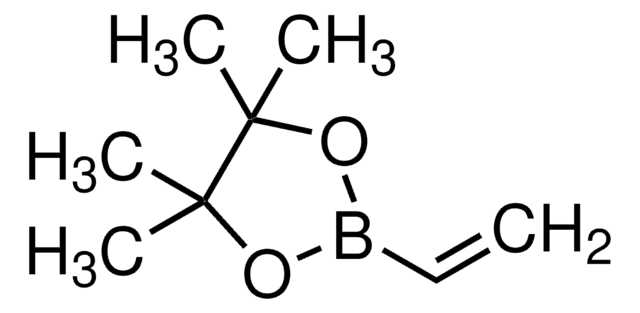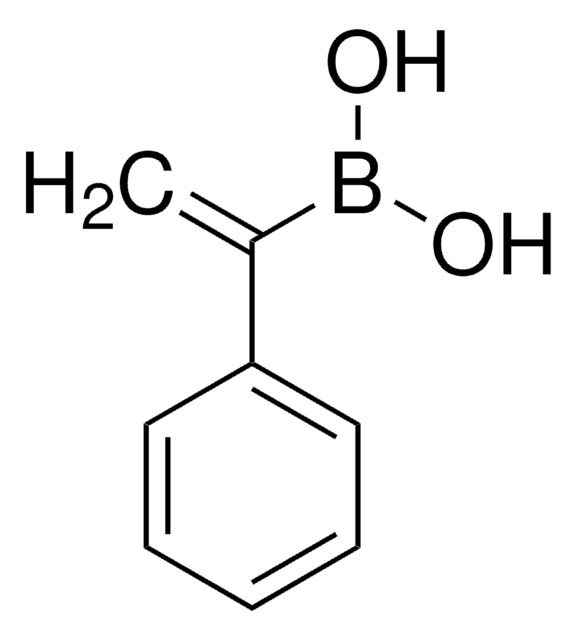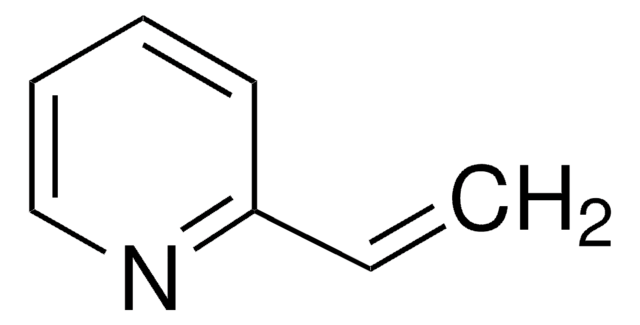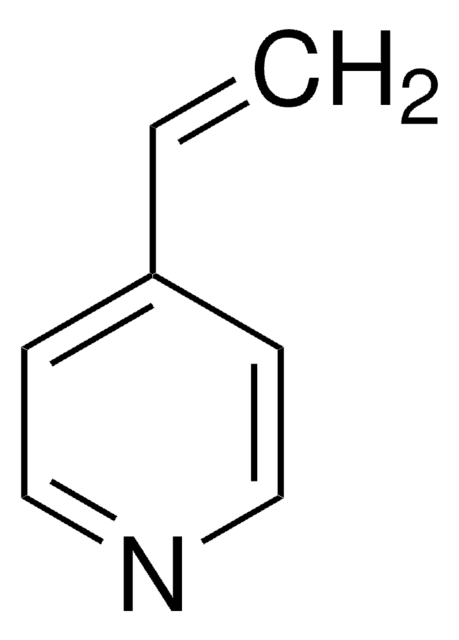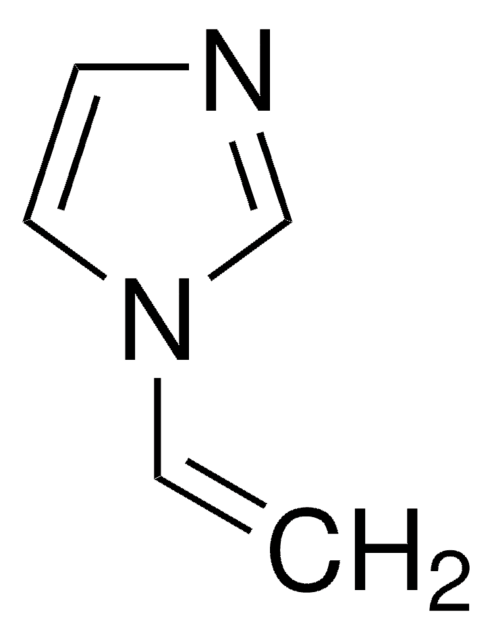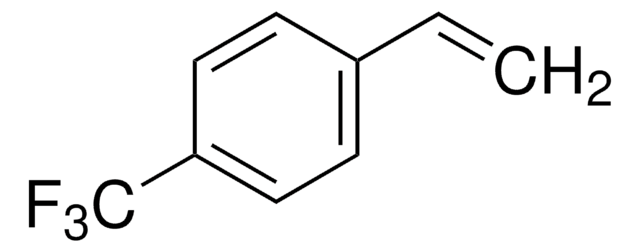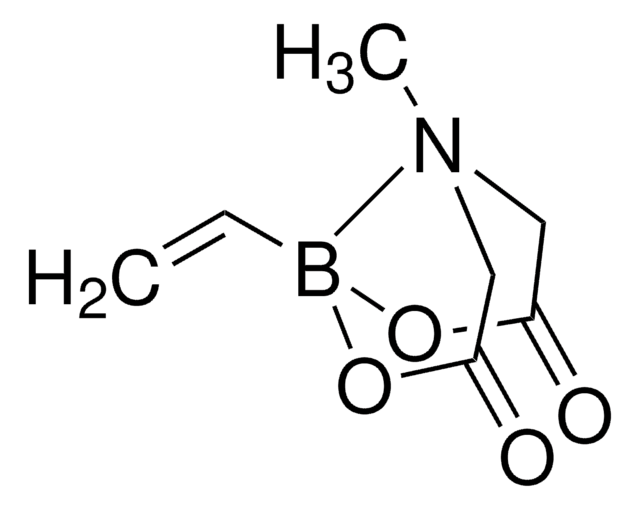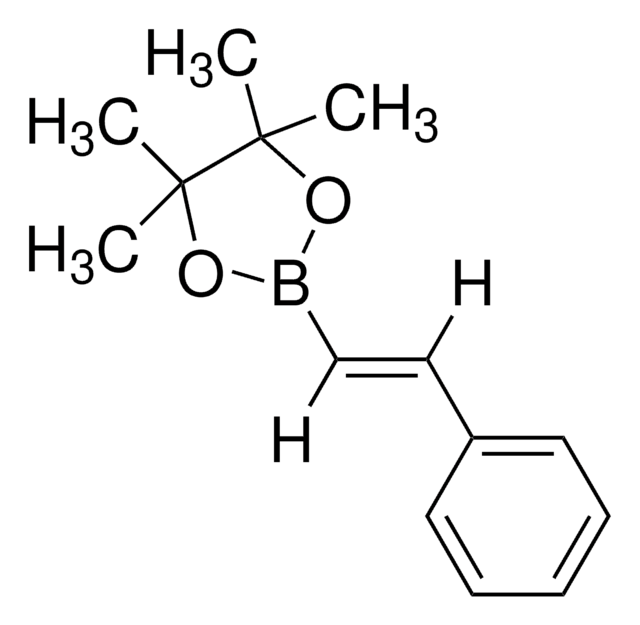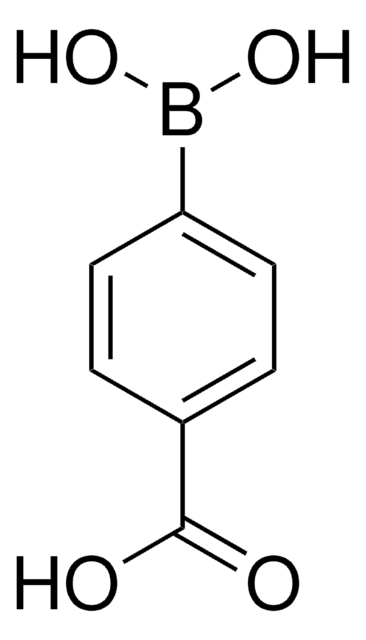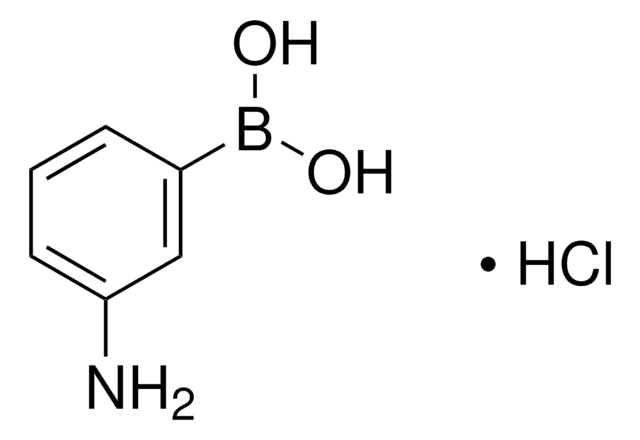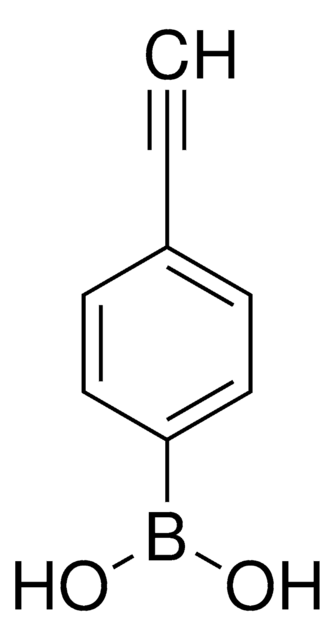417580
4-Vinylphenylboronic acid
≥95%
Synonym(s):
(4-Ethenylphenyl)boronic acid, (p-Vinylphenyl)boronic acid, 4-Styrylboronic acid, 4-Vinylbenzeneboronic acid, p-Vinylbenzeneboronic acid
Sign Into View Organizational & Contract Pricing
All Photos(2)
About This Item
Linear Formula:
H2C=CHC6H4B(OH)2
CAS Number:
Molecular Weight:
147.97
MDL number:
UNSPSC Code:
12352103
PubChem Substance ID:
NACRES:
NA.22
Recommended Products
Assay
≥95%
form
powder
mp
190-193 °C (lit.)
SMILES string
OB(O)c1ccc(C=C)cc1
InChI
1S/C8H9BO2/c1-2-7-3-5-8(6-4-7)9(10)11/h2-6,10-11H,1H2
InChI key
QWMJEUJXWVZSAG-UHFFFAOYSA-N
Application
4-Vinylphenylboronic acid is commonly used in the synthesis of styrene-based organoboron polymers such as vinyl-oligo(fluorene) polymer and boronic ester based self-healing polymer. It can also be used as a precursor in the synthesis of aggregation induced emission (AIE) dye.
Signal Word
Warning
Hazard Statements
Precautionary Statements
Hazard Classifications
Acute Tox. 4 Oral
Storage Class Code
11 - Combustible Solids
WGK
WGK 3
Flash Point(F)
Not applicable
Flash Point(C)
Not applicable
Personal Protective Equipment
dust mask type N95 (US), Eyeshields, Gloves
Choose from one of the most recent versions:
Already Own This Product?
Find documentation for the products that you have recently purchased in the Document Library.
Customers Also Viewed
Facile strategy to well-defined water-soluble boronic acid (co) polymers.
Cambre J N, et al.
Journal of the American Chemical Society, 129(34), 10348-10349 (2007)
Living anionic polymerization of styrene derivatives para-substituted with π-conjugated oligo (fluorene) moieties.
Sugiyama K, et al.
Macromolecules, 42(12), 4053-4062 (2009)
Room-temperature self-healing polymers based on dynamic-covalent boronic esters.
Cash J J, et al.
Macromolecules, 48(7), 2098-2106 (2015)
Ayman H Kamel et al.
Polymers, 12(6) (2020-06-27)
Herein, we present for the first time a novel potentiometric sensor based on the stimulus-responsive molecularly imprinted polymer (MIP) as a selective receptor for neutral dopamine determination. This smart receptor can change its capabilities to recognize according to external environmental
Cross-linkable aggregation induced emission dye based red fluorescent organic nanoparticles and their cell imaging applications.
Zhang X, et al.
Polym. Chem., 4(19), 5060-5064 (2013)
Our team of scientists has experience in all areas of research including Life Science, Material Science, Chemical Synthesis, Chromatography, Analytical and many others.
Contact Technical Service



